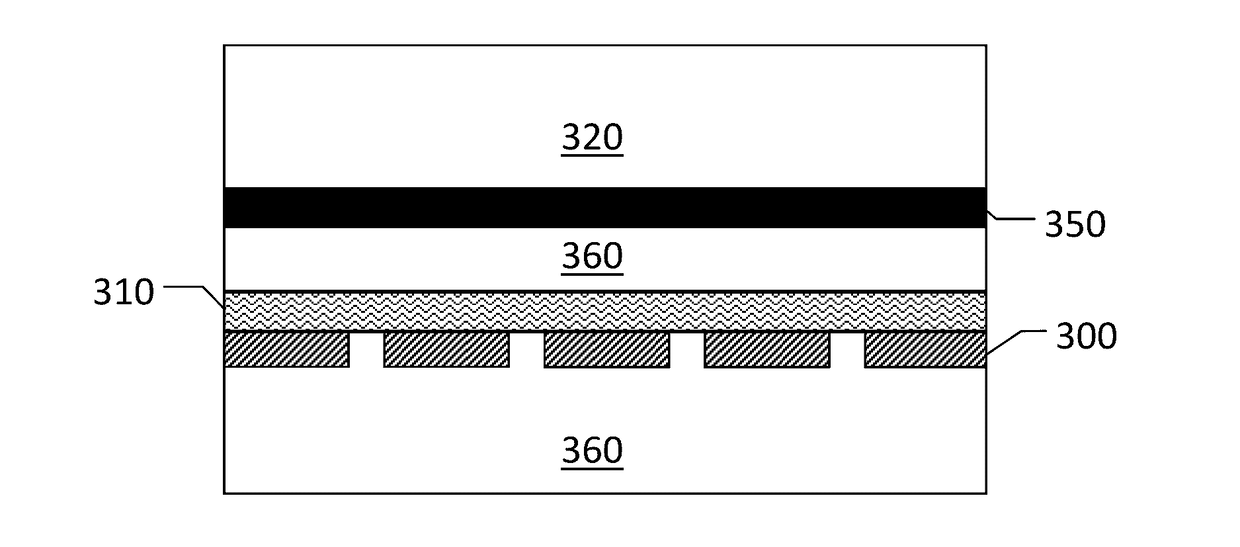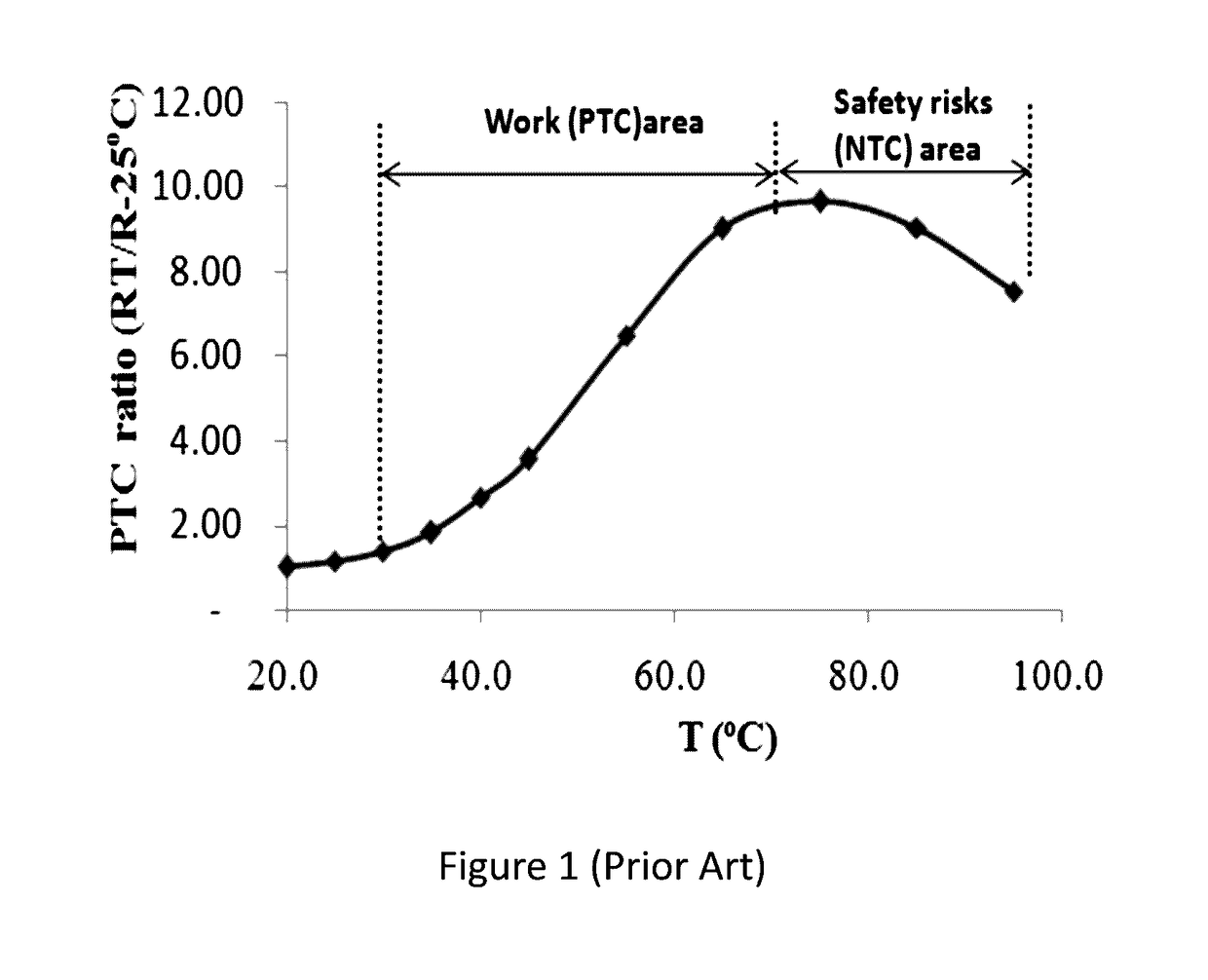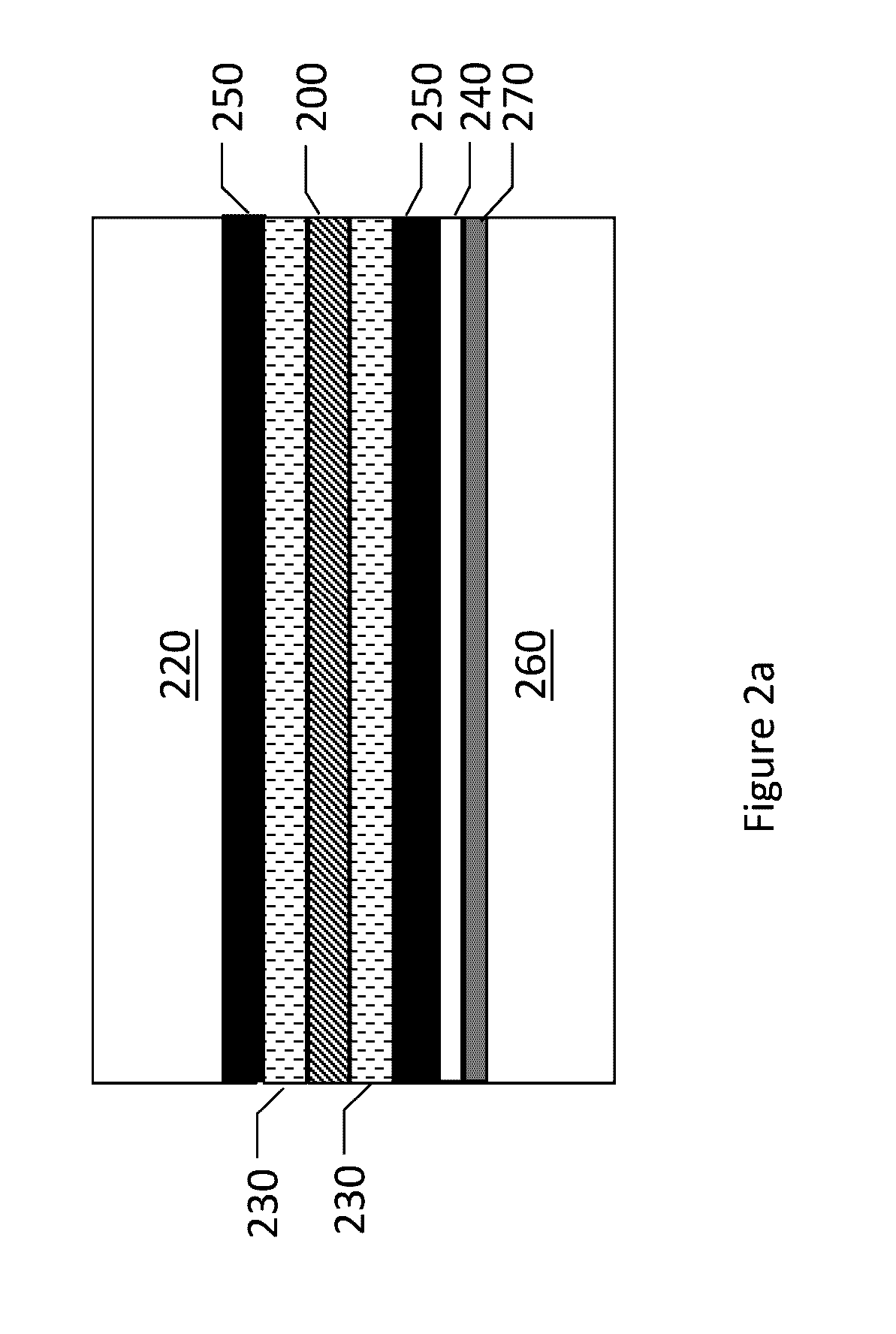Electrically conductive PTC ink with double switching temperatures and applications thereof in flexible double-switching heaters
a technology of double switching temperature and ptc ink, which is applied in the field of electricly conductive ink, can solve the problems of unstable polymer ptc composition and ntc behaviour, and achieve the effects of reducing the ntc effect of ptc composition, high ptc characteristic, and reliable operation
- Summary
- Abstract
- Description
- Claims
- Application Information
AI Technical Summary
Benefits of technology
Problems solved by technology
Method used
Image
Examples
example 1
[0118]The PTC ink and film were made following the typical procedure described above. The polymer resin-1, polymer resin-2, carbon black, solvent, dispersing additive, and rheology additive used in this Example, Example 2 and Example 3 are respectively polyethylene glycols (Carbowax 1450 from Dow Chemicals) with a melting point ranging from 42-46° C., polyvinylidene fluoride (PVDF) (Solef460 from Solvay) with a melting point of 155-160° C., carbon black REGAL 350R, NMP, BYK-220S, and BYK-410, and their contents in the PTC compositions are listed in TABLE-1.
[0119]In order to test the PTC ink for dispersion and resistivity, the PTC ink compositions of Examples 1, 2 and 3 were screen-printed onto polyester film to produce four strips, each strip having dimensions of approximately 1 cm by 10 cm. Silver contacts were applied to both ends of each strip in order to measure resistance and experimental error. In addition, a 5 cm by 5 cm square was printed to evaluate dispersion and uniformit...
example 2
[0120]The conditions were used as Example 1, but more polymer solution was added into the system. The resistivity at 25° C. of the PTC film from this example is 8.0 Kohm / sq. FIG. 8 shows the temperature-resistance curves generated using this Example.
example 3
[0121]The same conditions were used as Examples 1 and 2, but more polymer solution was added into the system. The resistivity at 25° C. of the PTC film from this example is 15.0 Kohm / sq. FIG. 8 shows the temperature-resistance curves generated using this Example.
[0122]As shown in FIG. 8, the PTC ink of the present invention presents good PTC effect, at 60° C., the PTC ratio RT / R-25 is higher than 10, the value of sample 3 is even higher than 20. As the temperature is raised further, no any NTC effect appear, it still present good PTC effect, at 120° C., the PTC ratio RT / R-25 is higher than 30, the value of sample 3 is even higher than 50. When the present PTC ink is applied in a self-regulating heating element with low regulated temperatures (<70° C.), the safety risks area is completely eliminated.
PUM
| Property | Measurement | Unit |
|---|---|---|
| temperature | aaaaa | aaaaa |
| temperature | aaaaa | aaaaa |
| temperature | aaaaa | aaaaa |
Abstract
Description
Claims
Application Information
 Login to View More
Login to View More - R&D
- Intellectual Property
- Life Sciences
- Materials
- Tech Scout
- Unparalleled Data Quality
- Higher Quality Content
- 60% Fewer Hallucinations
Browse by: Latest US Patents, China's latest patents, Technical Efficacy Thesaurus, Application Domain, Technology Topic, Popular Technical Reports.
© 2025 PatSnap. All rights reserved.Legal|Privacy policy|Modern Slavery Act Transparency Statement|Sitemap|About US| Contact US: help@patsnap.com



